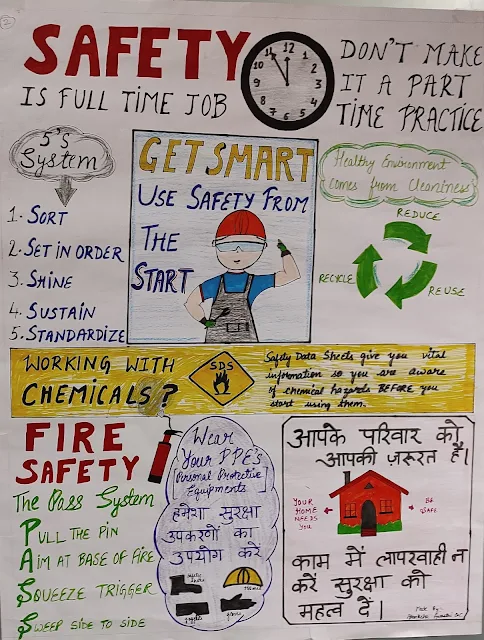Consider the process flow of each such operation & divide it into different activities, so that each activity can be considered separately for identifying the releases & discharges, Land intake, visual impact, resource consumption, health & safety risks, etc. Record activities in the ‘Initial Review Report’.
While dividing operations into activities, consider
ACTIVITIES (e.g. handling of hazardous materials, receiving activities, storage, Processing, Disposal activities, etc.)
SERVICES (e.g. Transportation, Maintenance, washing, conditioning, etc.)
PRODUCTS (e.g. Use of Raw materials, consumables, Packing materials, finished products, Bye-products, etc.)
Classify activities into ‘Direct’ and Indirect
DIRECT : Those which are under the direct control of the Organization Indirect.
INDIRECT : Those which are not under the organization’s direct control , but over which it can be expected have an influence (e.g. the activities performed by the contractors, sub-contractors, or suppliers )
Identify Aspects of each activity by considering the following :
INPUTS:
Use of raw materials, consumables, etc. (in case of natural resource), use of a non bio-degradable material (for possible material substitutions)
- Use of Water
- Use of Energy
- Use of Land, etc. (in case of new developmental activity)
OUTPUTS:
- Releases to Air
- Discharges to Water
- Solid Waste
- Discharge / releases to Land
- Noise
- Nuisance(Smoke,Odour,Dust,Vibration, Light, Heat, Radiation, etc.)
- Visual Impact
- Finished Products
- Bye Products
Identify Health&safety risks considering following:
Use the following potential source for identifying hazards
a)Ask your people working in relevant areas.
b)Task analysis/ job safety check.
c)Injury and illness history (first aid reports, compensation claims etc.
d) Safety audit reports.
Physical Hazards
Electricity, Noise and vibration, Heat & cold, Dust & fibres, Radiation, Exposed moving machinery parts, Occupational Overuse Syndrome (RSI)
Chemical Hazards
Liquids (e.g. office supplies, cleaning products, paints, acids), Vapours and fumes (e.g. welding fumes, toluene), Gases (e.g. oxygen, acetylene, propane, carbon monoxide), Flammable, combustible, and explosive materials.
Biological Hazards
Unclean restrooms, improperly stored medical waste, Mould, fungus, and mildew, Bacteria & viruses, Plants (e.g. poison ivy), Insect stings, Animal bites.
Ergonomic Hazards
Lighting, Workstation layout, Video Display Terminals (VDTs), Worksurfaces, Chairs, Colour, Lifting, Repetitive movements, Posture, Shift work.
Psychological hazards
Identify issues under all the following conditions for each activity:
Normal running conditions of the activities
